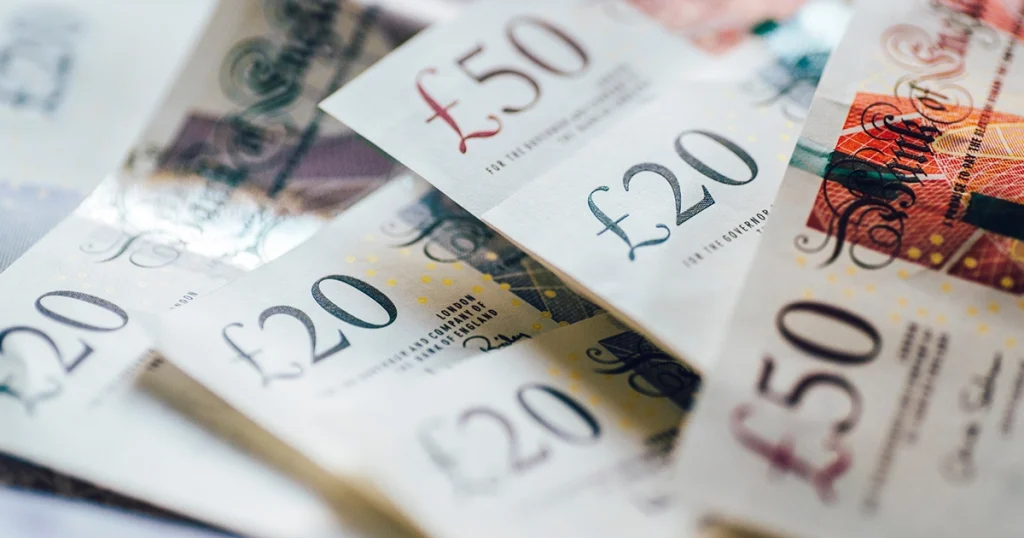Contents
Limited company tax loopholes
What is the most tax efficient way to pay yourself as a company director?
What is a Directors Salary?
Calculating the optimal directors salary
Should I pay myself in salary or dividends?
What is a dividend?
Why do people have holding companies?
Personal pension
Directors loan account
Extracting Cash on Sale or Winding Up
FAQs
Limited company tax loopholes
You may be reading this article because you’re looking for some easy wins that will save you tens of thousands of pounds a year on your tax bill. Sadly they no longer exist in the same way they did 20 years ago.
Tax relief for small businesses used to be far more generous because there was a genuine understanding of the very significant risks their owners took and the tax system used to have policies to support them for the cost of that risk.
Whilst the tax loopholes no longer exist in the same way they used to, you may be surprised to learn that there is still a huge gulf in the amounts of tax the most efficient and inefficient businesses pay.
There are still tax saving opportunities, but you or your tax adviser will have to work much harder for them by being efficient with your tax planning and by making long term plans, not just for you but also for your whole family.
***All figures are correct based on the 2025-26 tax year
Why you should work with us
- Three working hour response target for queries
- Fixed monthly payments and any ad hoc fees pre-agreed
- Full UK based team in the office 9-5 Monday-Friday
- All-inclusive tax planning and software support
- Inclusive support for tax investigations and issues
*T&C’s apply
How is a limited company different from a sole trader or self employed business?

The biggest difference between a limited company and a sole trader in the UK is that companies are seen as a separate legal entity to their owner, whereas for sole traders they are one in the same. The way to look at it is, that the company is almost like a separate person with it’s own business finances and assets.
What this really means from a tax point of view is that when money is withdrawn from the company it has to be officially declared as a payment to the director, either as a salary, pension or expenses, or the shareholders as a dividend or to a creditor as a loan repayment.
Many business owners will be a director, shareholder and sometimes also a creditor who lent it money to start up or expand, and depending on how you categorise these payments the tax treatment can be very different.
What is the most tax efficient way to pay yourself as a company director?

Typically there are several ways to get paid from your company, the trick to paying less tax is finding the right balance:
- Director’s salary
- Dividends
- Director’s loans
- Interest on director’s loans
- Claiming expenses
- Employee benefits
The most tax efficient way to get paid as a family
If you’ve ever thought about it then you might have realised that a family would be better off in terms of take home pay if it had two people earning £50,000 a year each, compared to a family where one person earned £100,000 and the others didn’t work.
Whilst most people in employment don’t have control over how their family members get paid, small business owners especially in family run businesses do have some influence in this area. Let’s talk about the factors that contribute to this:
Personal Allowance
Every person has a personal allowance which means that they can earn up to £12,570 tax free, which is why a family should seek to utilise all of the personal allowances of it’s members. While adding a spouse who doesn’t have a job to the company payroll might seem like the easy way to achieve this, it’s essential to recognise that if an artificial arrangement exists then it could be tax avoidance and challenged by HMRC.
If the spouse is genuinely involved and supporting you in the business then the best way to utilise their personal allowance is to add them as a director because it reduces the level of justification needed regarding specific working hours, qualification and market value as they are being paid for their strategic input and their accountability, assuming they contribute this.
It’s much harder to claim your children are capable of being directors if they are under the age of 18 and you really need to be careful if you end up hiring them and then paying them overly competitive wages based on the market value of their experience.
Basic Rate Band
This is the amount of income you can earn which is taxed at the the lower rate of tax, this is usually 20% for income tax or 8.75% for dividend tax. As a person seeking to be tax efficient, it is always a good idea to utilise this band as well as you can.
Sometimes to do this you have to declare income earlier than you normally would even if you don’t want to extract it from your business. It is often better to pay less tax today and lock in a preferential rate, than pay a lot more tax later.
If you declare salary or dividends that you don’t withdraw from your business then they can always sit in your directors loan account as money owed to you and be withdrawn tax free later on.
What is a Directors Salary?

A directors salary is a payment a company makes to the director for the services provided in running the company. As we progress with the article you will notice that the optimal directors salary amounts are quite low, which may raise the question:
Can limited company directors be paid less than minimum wage?
The usual employment rules regarding minimum wage, working hours, holiday, auto enrolment pensions, etc…. don’t automatically apply to directors unless they have a specific employment contract.
Calculating the optimal directors salary?
One of the most effective tax planning strategies for UK businesses to employ is to achieve the right combination of how they extract funds via salary and dividends for the business owner.
The strategy I’ve outlined below is based on a regular person with no employee national insurance exemptions, so it would potentially be very different if you were for example, working and over the state pension age. It also relies on your business having enough retained earnings to pay out dividends, so businesses with cumulative losses would also not benefit from this.
Sadly since the April 2025 Employers NIC changes calculating the optimal salary has become more complicated than ever, however this is a brief guide on the thought process needed and what to prioritise:
Step 1 – Always use your personal allowance
A personal allowance is pure tax relief, it should always be used up if you want to be tax efficient. If you don’t have any other sources of income then you would need to pay yourself the full £12,570 from your business, which is okay if you have employment allowance remaining as you can do this without triggering any employers or employees NIC’s.
If you don’t have any Employment Allowance remaining then you may want to consider reducing your salary if you have other sources of income like employee benefits, rental profits, taxable interest, other salaries, self-employed income etc… that when combined will use up your personal allowance.
Is it worth paying employers national insurance contributions on my directors salary?
Taking a directors salary between the secondary threshold and the full personal allowance may trigger employers NIC contributions if you don’t have employment allowance left or you didn’t qualify for it.
If you don’t have any other way to use up your personal allowance then it is still worth doing because the 15% you’ll pay (2025-26 tax year) will give you corporation tax relief of at least 19% plus the dividend tax you’ll save which works out as approximately another 7% (8.75% prorated).
Tip: Check our my employment allowance loophole later in the article!
Step 2 – Qualify for your state pension
If you’re reducing your salary then be careful about going below the lower earnings limit of £6,396 as that is the point you will no longer get your credit for your state pension. If you acquire you state pension credit via other means like being the primary recipient of child benefit, other employment or you already have a full NIC record then you are okay to dip below this.
Step 3 – Minimum salary
You should always receive at least £5,000 a year, which may mean taking less dividends if you have to in order to stay within your total income target. £5,000 won’t trigger any national insurance and even if you don’t have any personal allowance left, it is still better to pay income tax on this amount, than the combination of corporation tax and dividend tax.
However it may be the case that you’re not in the position to receive any more money from the company if your basic and higher rates have already been utilised through other income sources.
Step 4 – Qualify for your other benefits
If you need to show that you work a certain number of hours at minimum wage to qualify for free childcare or other benefits then that will also need to be considered and will potentially override the other factors here.
What is employment allowance?
Employment allowance writes off the first £10,500 of your employers national insurance contributions and is available to businesses with two or more employees/directors earning more than the secondary threshold of £416.66 per month.
In the situation where your circumstances change during the tax year and you gain or lose team members, you can still claim the allowance for the whole year as long as you met the criteria for at least one month of the year.
If you have two separate companies then you should be careful about taking a salary from both of them as there are rules for connected companies to ensure that only one of them benefits from the employment allowance.
The basic rule for deciding if 2 companies are ‘connected’ with each other is that either:
- one of them has control of the other
- both are under the control of the same person or persons
- where they are under common family ownership then there is also a commercial interdependence test.
Tax Loophole on Employers NIC’s!
If you’re a solopreneur/one person band and it can be legitimately arranged, then consider hiring someone who is at least 21 years old for at least a month where they are paid more than £417 to trigger your employment allowance. Paying them £417 in just one month will trigger the EA for the whole year and save you £1,136. They might even do something useful for your business as well.
Tax planning tips
If you have other sources of income for example, from a rental property, then you may not need to have the full directors salary and you could pay yourself up to the secondary threshold of £5,000 and avoid any employers national insurance bills. As long as the other source of income tops your total up to at least £12,570 then you won’t be wasting any personal allowance.
Interestingly an individual with two jobs paying £12,570 each will pay less tax than someone with one job earning £25,140 even though their total income is the same.
While the income tax bills for both will be the same, the person earning it through just one employer will end up paying more in national insurance. The personal allowance for tax is based on your total income for the tax year, however the allowances for national insurance are worked out per job per month.
Why take a directors salary, won’t dividends use up my personal allowance?
Dividends do use up your personal allowance but not efficiently like a salary does, while you will get relief from your dividend tax liability which is 8.75% at the basic rate or 7% for comparison after you factor in that it is a tax after a tax, your company will still end up paying corporation tax so the overall benefit to you would be less then if you took a salary and got both the corporation tax and dividend tax relief.
Should I pay myself in salary or dividends?
The challenge with only taking a salary from your company is that after you use up your personal allowance you would need to pay income tax at 20% and then Employees NIC’s at 8%, in addition you might also have employers NIC’s of 15%, which would give you a total tax bill of either 28% or 43% depending on if you have employment allowance remaining.
In contrast taking a dividend allows you to pay corporation tax at between 19% – 25% and then dividend tax at 8.75% which is really 7% for comparison, which means that your overall tax rate would be somewhere between 26% and 32%.
Overall tax cost at basic rate:
Salary = 28% to 43%
Dividends = 26% to 32%
Overall tax cost at higher rate:
Salary = 42% to 57%
Dividends = 46% to 50%
At the higher rate Employees NI reduces to 2% from 8%, however income tax increases to 40%. Dividend tax increases to 33.75% (avg. 26% comparative). You’ll notice that in my articles I often refer to comparative or pro rated dividend tax, this is because it is a tax after a tax (corporation tax) and needs to be adjusted when comparing it to income tax and NIC’s.
As you can see dividends are nearly always at a lower combined rate compared to a salary, however in my calculations above there appears to be a scenario at the higher rate where salaries look more beneficial. In reality it isn’t possible to pay a basic rate dividend before a higher rate salary as the tax rules always ensure salary is taxed first.
However in a scenario where you have employment allowance left, but profits that trigger the higher corporation tax rates then it could be worth taking a higher salary.
There is another overlooked cashflow advantage to taking dividends, as corporation tax and dividend taxes are generally paid in arrears after the year end whereas employee taxes are paid monthly. I’ve included a more comprehensive section later in the article about the other benefits of dividends.

How to pay less higher rate tax
One thing that is worth understanding about the benefits of taking dividends over a salary, is that with salary you will in real terms earn less at the basic rate and more of your income will be pushed into the higher tax band, because the tax thresholds are worked out based on your gross income and if you take a salary, it means the national insurance and income tax you pay use it up.
Dividends in contrast allow you to calculate your gross income before dividend tax has been paid but after corporation tax. You could have the same business profit, but end up taking home a lot more as dividends compared to receiving a larger salary partly for this reason.
Can you be worse off by being paid more?
If you ask the person down the pub, they will probably tell you how there’s no point in earning more money after a certain point and that you will be worse off, because of having to pay higher rate tax on all of your income.
That’s not the case, purely because when you go over into the next threshold of tax, the new rate only applies to the income you earn over that threshold. You will still also be taxed at the basic rate on any income which falls in the basic tax range and providing you don’t lose your personal allowance after a £100k, you will still benefit from having tax free income.
While you can’t be financially worse off by working more, based on a scenario where you pay additional rate tax, lose your child benefit and also your personal allowance, your total tax rate for part of your income can be well over 55%, which is why it’s worth investing in professional help when it comes to tax planning.
What is a dividend?

Dividends are an income distribution to the shareholders of a business and unlike salaries they are calculated out of the profits after corporation tax has been taken into account. While you may think it’s odd that a small business owner pays themselves in the same way a large bank might distribute its business profits to its owners, the reality is that many forms of company can utilise dividends.
The golden rule of a limited company paying dividends is that it must be able to afford to out of its cumulative profits, which means that a business that hasn’t yet broken even can’t utilise these.
It’s worth considering that while a company needs to have profits after tax to pay dividends, not all profits after tax need to be paid out. This is why sometimes they end up with large retained earnings balances on their statement of financial position.
How do I take a dividend?
The formal procedure to issue a dividend is to hold a board meeting with all the directors and agree to do it, but the reality is that if it’s just you in the company then this might be a bit less formal. While the board must agree the dividend before it’s paid, it’s okay to create the dividend voucher and meeting minutes at a later date
How do you pay dividend tax?
One of the other benefits of utilising dividends is that the tax on them is declared on your self assessment tax returns, which means that unlike the income tax and national insurance due on salary payments, you can benefit from paying it much further in arears which can be great for cash flows, I’ll cover this in another article.
Are there any other advantages of taking dividends?
The two main other advantages of taking dividends outside of the National Insurance savings can now be considered:
Expands your basic rate band
Pound for pound a dividend is far more efficient than a salary when you’re working out the usage of your basic rate band. This is because your earnings via a salary are worked out before you deduct income tax and employees NIC’s, whereas for a dividend the impact on your earnings only needs to consider dividend tax and not corporation tax.
This means in terms of take home pay, you can earn more money at the basic rate by taking dividends then you could if you took a salary.
Doesn’t count as Earned Income
Dividends also don’t impact certain allowances in the same way a salary does and in particular your personal savings allowance and your starting rate of savings. This means by taking a low salary and dividends combination you are also able to earn another £6,000 in interest income tax free, assuming you have no other income sources.
This can be useful if you’ve invested a lot of money into your company and you are charging it interest on that.
Dividends: How much can you pay yourself tax free?
While it might not be the biggest win, it’s worth making sure that you use up your £500 dividend allowance (2024-25) and benefit from a slightly lower self-assessment tax bill.
This allowance means that you don’t have to pay dividend tax and is completely independent of your other allowances which means that you could even benefit from it if you’ve already used up your personal allowance and basic rate through other types of non dividend income. It might however push you into the high income child benefit tax charge and also increase you student loan repayments.
How much should I take in dividends?
One of the greatest tax benefits of running your own business is that assuming your personal financial situation allows it, you can actually leave money in your business and pay tax at a lower rate or just avoid it altogether. Or better still you can utilise the timing of when dividends are issued so they fall into the optimal tax year to lower your overall tax burden.
A good example of this is where a company has made a profit after tax of £100,000. Whilst in this scenario it isn’t possible to reduce the corporation tax bill from the timing of dividends, it is possible to manage the dates the dividends are issued so they fall within a tax year where there is still some basic rate of tax remaining. For example if you only had £30,000 income for the tax year ending 5th April 2023, you could issue another £20,000 in dividends and it would be taxed at the lower rate of 8.75%.
One of the most common tax planning mistakes I’ve seen over the years is when people draw out money and pay higher rate dividends on it, to then use it to pay off their mortgage because they don’t want to pay the 2% APR on it. Paying 33.75% dividend tax just to pay off a mortgage with a small annual interest charge is a false economy and they would generally be better off leaving it in the company.
Can I refuse to take dividends from my company?
It is possible to forgo dividend payments in a scenario where you wish to issue them to one shareholder of the same type but not the other, by waiving a dividend in a situation where there are enough profits to pay the waived dividend if that shareholder had chosen to accept it.
This can be useful when one partner needs the money but the other doesn’t want it in a particular year, but in general if this is a regular occurrence then it is better to use a holding company instead so you don’t lose track of who is owed what.
Alphabet Shares
One of the great things about a limited company is the variety of shares that are available and one of the main advantages of this is that, while dividends and business sale proceeds need to be distributed evenly over every share in it’s class, it is possible to pay different amounts of dividends out to different classes of share. This can be helpful when you have a partner who you wish to have equal ownership of the business in terms of equity and voting rights, but they need to get paid less because they are doing less of the work.
It is also possible to create shares with rights to dividends but not to the equity in the underlying business or power to vote. When utilising alphabet shares care must be taken not to create an artificial arrangement that could land you with issues when it comes to HMRC, the Arctic Systems case outlines why a husband and wife should have the same class of shares in a trading business.
There can be further challenges when using alphabet shares to remunerate employees instead of paying them a higher salary as HMRC lose out on their national insurance contributions and will therefore attempt to challenge anything they perceive to be less than a pure partnership stake.
Why do people have holding companies?
Before exploring this topic further it is necessary to understand that limited companies can own other limited companies and that dividends are only taxed at the point where they pass from a company to an individual.
This means that dividends issued between a subsidiary and the holding company which owns it are tax free and known as franked investment income. In addition capital distributions from one company to another are tax free and are covered by the substantial shareholding exemption.
There are several instances where holding companies are really useful:
- To transfer profits out of a trading company where they are at greater risk if there were financial difficulties. For example if the company went insolvent, the creditors could try and access any retained profits which had built up over time.
- Pay out dividends in a scenario where two or more partners have competing tax objectives and one doesn’t want to waste their basic rate band but the other doesn’t want to pay higher rate tax by taking too much in dividends. In this case both parties can pay out the same dividends to their holding companies and then access them at their leisure and only be taxed on the amounts actually withdrawn.
A great option to reduce your tax liability is to only withdraw the money from the business you actually need, because you can save a lot of tax by leaving money in the company to invest in other ways for example by transferring into a property company (SPV), letting it build up for when you exit or have a year where profits are lower and even pay pension contributions.
However to utilise tax planning strategies like these there have to be enough profits in the business and they are dependant on the needs of your lifestyle, assuming you can live on a lower level of drawings while money builds up.
High income child benefit tax charge
There are instances where if your income goes over £60,000 – £80,000 a year then you may end up repaying some or all your child benefit. This is another reason why it pays to stay out of the higher rate of tax and utilise family allowances efficiently.
Personal pension
Pensions can be a great way to reduce your tax bill, but need to be used carefully as they involve locking away money until you’re 55 years old. They give you tax relief either because they are treated as a deductible expense by your company or in the instance where you pay into a pension privately then the government will top it up to give you basic rate relief.
If you do pay into a private pension, the government will also extend your basic rate of tax to compensate you for only topping it up at the basic rate, this means that you will pay less higher rate tax. It’s also worth remembering that however you pay into your pension, you’ll receive a quarter of it tax free when you do start withdrawing it.
If you’re over 55 years old but still working then be careful about withdrawing your pension too early as it can restrict the amounts you can pay into it in future years, to learn more about limits and allowances on pensions read here.
Why is it better to pay into your company pension instead of a private one?
Ultimately to get money out of your business to pay into your private pension you will either have to pay corporation tax and dividend tax, or income tax and national insurance. The government will only ever top your contributions up by the basic rate of income tax which is 20%, which means that if you paid corporation tax at 25% and dividend tax of 8.75% to get that money out, then you will be out of pocket.
In contrast by paying through your company you save the corporation tax and the dividend tax, but forego the government top up, this is usually a much better deal.
Marriage Allowance
In an instance where a spouse isn’t earning at all then it’s possible to transfer £1,260 of their personal allowance to the other which creates a £252 tax saving, this can be done through an online application and then reflected in your personal tax return or through a tax code so HMRC collect less tax.
Directors loan account

If your goal is to reduce the overall amount of tax you pay, then you you really need to optimise the balance of salary and dividends that you withdraw, as well as get the timing right so that your income ends up in the right tax years. In terms of the latter there is a really good tool you can use that most business owners will overlook, I’ll quickly cover this before proceeding.
I’m referring to is the directors loan account and the reason it is so helpful is because it can create a timing separation between when salary, dividends and expenses are taxed and when they are paid out.
The DL account is essentially a running tab you have with your company and certain things like issuing dividends creates a debt to you and other activities like moving money from your company bank account to your personal one reduces the amount owed to you.
For an in-depth guide on how a Director’s Loan account works, see our article on How to Deal with an Overdrawn Director’s Loan Account
Can I create dividends even if I don’t want to withdraw the money?
There may be tax years where you have made more in company profits than you actually want to withdraw from the business, this can lead to you having the option to create further dividends that are within the basic rate of tax at 8.75%.
The reason this is tax efficient is that the dividends you don’t withdraw will sit on your directors loan as money owed to you. This can be really beneficial as you can then withdraw that money in a later year with no further personal tax consequences.
No regrets
There might be a time where to get the money you want out of the business you may end up paying some higher rate tax at 33.75%, which means you may regret all those opportunities you missed to take the money at the basic rate of 8.75% even if you didn’t need it then, perhaps because your living expenses were much lower. Using the DL account efficiently means you can lock in a lower rate of tax, even if it does mean paying tax on money you haven’t received yet.
Can I pay myself a dividend every month?
Yes it is possible to pay yourself a dividend every month, you can have a board meeting at the start of the year to declare it, but you must be certain that there will be enough profits available and perform regular checks.
A better solution might be to withdraw money every month as a loan from your company and then create a dividend every quarter or year to repay the loan. You may have to pay your company interest if you go down this route, or declare the interest free loan on your P11d and pay tax on it.
Do I need to take separate payments for salary and dividends?
I often recommend that our accounting clients just take one payment every month which can be for a combination of salary and dividends, there is no need to split these out. And, in the case of spouses working together it is even possible to aggregate the drawings and directors loan accounts so there is only one balance or payment for the couple, although it is better this is paid into a joint account so there is no confusion about it being shared income.
Overlooked Opportunities

Interest on directors loans
Many small business owners end up in a position where their company owes them money and they can really benefit from charging their business a commercial rate of interest on the debt, I briefly explained how it works in my corporation tax article however I’ll cover it in a bit more detail here.
As a director you can benefit from the savings allowance of £1,000 plus an additional £5,000 due to the starting rate of savings if your income is less than £17,570 a year, dividends don’t count towards this so it probably will be.
That’s £6,000 of interest you can receive tax free and it is a tax deductible expense for your company so if you are in a position to utilise this then it can be rewarding to do so. Typically your company needs to file a CT61 tax return to notify HMRC of how much tax it has deducted from you at source on the interest it paid, you would then reclaim this tax on your next self assessment tax return.
Extracting Cash on Sale or Winding Up
Sometimes the best option is just to do nothing! This can be particularly attractive if you are approaching retirement and you want to sell or wind down your business.
Instead of trying to extract your excess cash through higher rate dividends at 33.75%, you could stick it in a high interest business savings account and then extract it as capital at a 14% tax rate under the Business Asset Disposal Relief Rules. Formerly known as Entrepreneurs Relief, BADR provides a preferential rate compared to taking a higher rate dividend.
A really important tax planning point here is to ensure you’ve made the most of your basic rate dividends before you go down this route, as the 8.75% basic rate is preferential to the 14% BADR rate on offer.
The BADR rate is limited to a lifetime allowance of £1Million per person, before it switches to the usual capital gains rate of 24%. If your business is worth more than a £1Million then you should ensure that the shares have been distributed efficiently over any family members involved so they each benefit from their £1M allowance.
In an ideal world you would sell the shares in your business rather that the assets and goodwill, so that you aren’t liable to double taxation where you pay corporation tax on the profit on your assets and then also tax to extract it. Asset sales also leave an empty company for you to close down via an MVL, which can come with expensive insolvency fees.
If there is enough cash, it is also possible to sell your shares directly back to the company and benefit from BADR. This can be attractive in a situation where you have other directors and shareholders to continue the trade.
Move to another country
Whilst it may seem extreme, if you’re willing to leave the UK for a period of five years then you can drastically reduce your tax bill. For example living in Dubai for 6 months and drawing out all of your money via dividends or salary, or even pension tax free.
After this you could spend the remainder of the five year period in the North of France, with limited visitation trips to the UK.
This strategy isn’t going to be right for many people, but is still surprisingly common as the savings are huge. Once you have your tax free cash you are free to gift it to your family and also avoid inheritance tax providing you live for 7 years after your gift.
Other ways to get paid
It’s worth considering if you are making the most of the various allowances available which allow you to put personal expenses through the business, electric cars and trivial benefits come to mind but also be aware about situations when it isn’t always beneficial to do so, due to your company and yourself having to pay benefit in kind tax or class 1A employers national insurance.
To achieve optimal tax efficiency in using up your allowances, it is worth getting a tax professional involved, quite often you will save more than they cost. This is frequently the case with the clients we support and although our office is based in the Northampton area, we actually work remotely with many more clients further afield so please get in touch if you need some help.
FAQs
1. What are dividends, and why are they tax-efficient?
Dividends are profits distributed to shareholders after corporation tax is deducted. They are more tax-efficient than a salary because they avoid national insurance contributions and are taxed at lower rates, such as 8.75% for the basic rate in 2025-26.
2. Can I declare dividends even if I don’t withdraw the money from the company?
Yes, you can declare dividends and leave the money owed to you in the company through your Director’s Loan Account. This approach locks in lower tax rates during profitable years while allowing you to withdraw funds tax-free later.
3. Is it better to pay myself a salary or dividends?
A combination of both is usually the most tax-efficient approach. Taking a moderate salary maximises the personal tax-free allowance, while dividends benefit from lower tax rates and avoid national insurance contributions.
4. How can pensions reduce my tax burden?
Contributing to a pension directly from your company reduces corporation tax and avoids dividend and income tax. This method is more efficient than withdrawing money to make private pension contributions.
5. What is a Director’s Loan Account (DLA), and how can it be used for tax efficiency?
A DLA tracks transactions between you and your company outside salaries or dividends. Declaring dividends and leaving them in the DLA allows you to reduce immediate tax liability while deferring withdrawals to more favourable tax years.
6. How can family members help reduce my tax burden?
By involving spouses or adult children in the business as directors or shareholders, you can maximise their personal allowances and basic rate tax bands. However, their roles must be genuine to comply with tax rules.
7. Can I reduce my tax liability by using a holding company?
Yes, dividends issued to a holding company are tax-free, allowing you to reinvest profits or defer personal tax liabilities until you withdraw the money.
8. How important is professional advice in tax planning?
Professional tax advice is essential for balancing salaries, dividends, pensions, and other strategies. A tax professional can save you more than they cost by identifying overlooked opportunities and optimising your financial plan.


